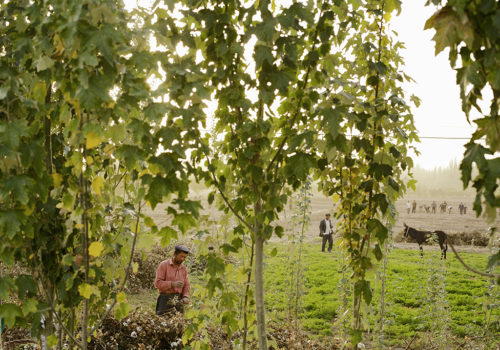Since 2009, the condition of the Uighur people has gone from bad to worse. The religious practices of the Muslim population in Northwest China have been threatened and labeled extremist, while their culture has been crushed by the steamroller of economic expansion that has transformed traditional villages into concrete hubs.
A few days ago, Radio Free Asia reported that, “Chinese authorities will introduce a new law effective next January that is meant to combat religious extremism in China’s far-western Xinjiang region, although experts warn it will infringe upon the rights of the ethnic minority Uighur Muslims living there.” For Carolyn Drake, who had begun traveling regularly to the region two years before the first riots erupted, the situation has altered her relationship with the locals. “The political climate has placed a barricade between me and the people I was trying to connect with, and it began to seem impenetrable,” she says.
Recognizing the limitations of photography in the observer/observed relationships, especially with a religion that rejects the representation of living beings, Drake decided to hold a different kind of discussion with the Uighur people – a conversation where vocabulary and grammar were replaced by photographs, crayons, scissors and glue. “We sat down in restaurants, art studios, shoe shops, walnut orchards, public parks, courtyards, hotel rooms, slaughterhouses and jade bazaar while they worked on the images,” she writes. “The collages and drawings they made are the product of our exchange, in all their roughness, ambiguity, and risk”
These collages, printed on large paper, follow a prologue of photographs. The work is a metaphor of threatened timelessness. A pure white lamb, its hind legs wobbly, casts a suspicious gaze in the direction of a patently new road. Poetry is everywhere in Drake’s photographs, echoing the writings of the Uighur author Nurmuhemmet Yasin, whose work is found throughout the book. The title of his essay “Wild Pigeon,” an allegory of Uighur experience, gives the book its title and structure. The first part wavers between dream and reality; the second part leads to the realization that the dream is of an inevitable future; the third part is filled with transformations—”We were here, one after another, generation after generation, living a happy life. Why should we leave now ?”—the fourth is about the futility of resistance. The final part is dedication to death, which is the last remaining land of freedom.
A small album (about 10×15 cm) is filed in the back cover and features portraits of Uighurs posing in front of kitsh and traditional studio backgrounds. They are accompanied by the last lines of Nurmuhemmet Yasin: « I see everything clearly now – the sky is still such a deep blue and the world remains so beautiful, and everything is so quiet and still. »
BOOK
Wild Pigeon
Photographs by Carolyn Drake
















